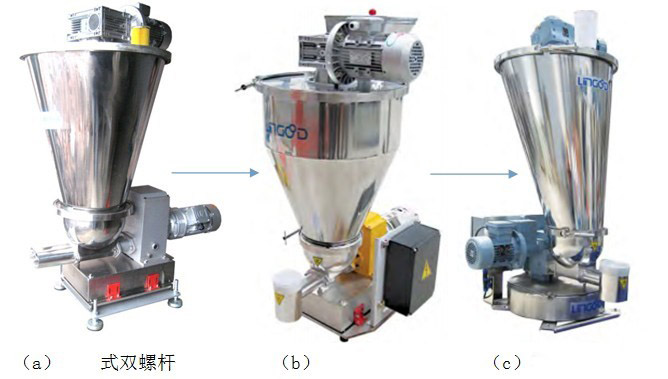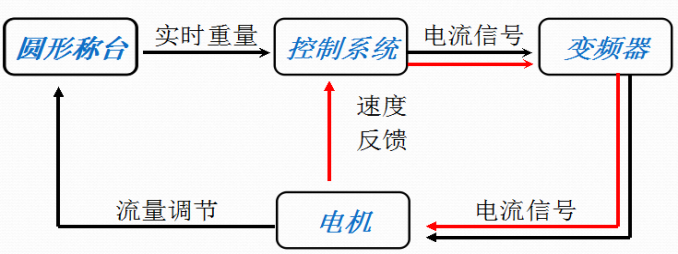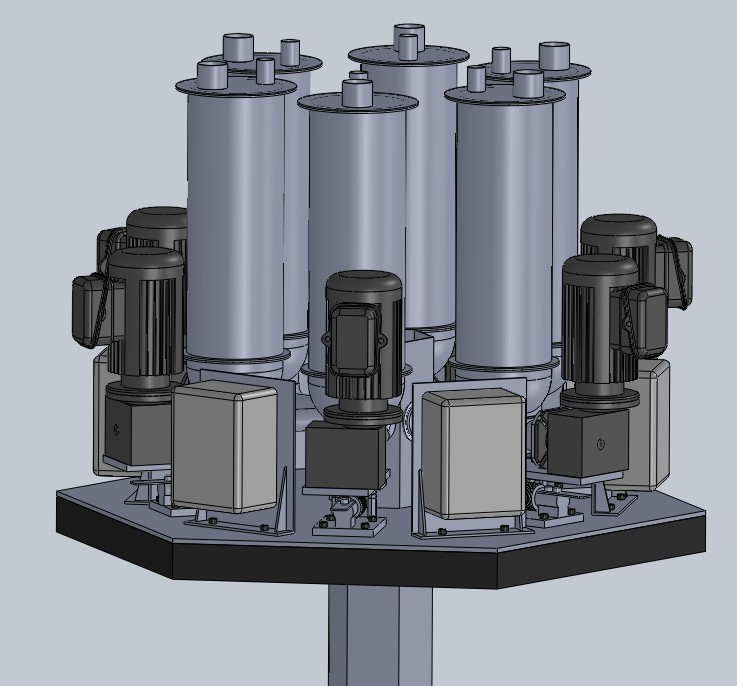Mixing overview
In the processing of special plastic materials, it is often necessary to mix the base materials such as synthetic resin with the required auxiliary materials (such as mineral powder, glass fiber) and additives (such as plasticizers, flame retardants, antioxidants, etc.). A nucleating agent, etc.) enters the compounding extruder. This process of mixing by formula is called Plastics compounding. Plastic compounding dates back to the birth of the celluloid in 1870. Since then, with the development of plastics coloring, blending, filling, reinforcement and other modification technologies, the compounding technology of various general-purpose plastics and engineering plastics has also been improved. By the late 1970s, 60% of the world's thermoplastics had to be compounded before processing of special materials or even one-time molded products. At the same time, various compounding equipment (same-directional twin-screw, reciprocating single-screw, continuous Research and development of mixers, etc. have also been greatly developed.
Early mixing equipment was batch-based, requiring multiple materials to be mixed in sequence. Due to various drawbacks of batch mixing equipment, a US company introduced the world's first generation of continuous feeding equipment in 1972, which later evolved into weightlessness. In the continuous compounding extrusion process, various raw materials can be continuously and synchronously added through it, and the joining speed of various raw materials is obtained according to the corresponding ratio (recipe) to obtain sufficient precision.
At present, with the increasing demand for product quality, working environment and automation, the application of weightlessness is becoming more and more extensive. It is estimated that the domestic market for twin-screw extruder production lines is about 20,000, of which less than 8% are equipped with weight-loss scales. In the past year, the proportion of 2,000 new production lines equipped with weightless scales is gradually increasing, with a ratio of about 10-20%, but the overall ratio is still very low, while the proportion of developed countries is 60-70% or higher. It is expected that the demand for weightlessness in the market in the next few years will be explosive.
In large-scale, continuous plastic processing, it is basically necessary to equip the weightless scale with auxiliary peripheral equipment, such as a storage system and automatic feeding to achieve a complete feeding function.
Figure 1 shows a typical plastic compounding extrusion line using a weightless scale and a feeding system.

Figure 1 Â Â Schematic diagram of a typical plastic compounding line using feed and weight loss measurement
Development history of weightlessness
Loss-in-weight is said to have been widely used in industrial process weighing continuous measurement since the 1990s. Weightlessness is gradually replacing the belt scale and accumulating scale. As a new measurement method, it is gradually applied to material processing in more and more industries.
China's first weightlessness was born in 1994 in Wuxi Chenghao Company (the predecessor of Lingge Company). At that time, the single-chip control technology was adopted, and the feeding accuracy was about ±1wt% (the same below). Since then, Cheng Hao has continuously improved and upgraded the technology of weightless weighing. He experienced the development process of PLC, instrumentation and microprocessor control diversion, and gradually expanded the market for weightlessness in the domestic market. Until 2007, the company was founded by the United States (K- Tron) mergers and acquisitions. In 2012, Wuxi Lingge Machinery Technology Co., Ltd., which was established by the original core team of Chenghao Company, undertook the resources of Wuxi Chenghao Company and continued the new stage of domestic weightless technology development.
At present, the domestically produced weightlessness is called the most advanced microprocessor control technology. The controller has fundamentally eliminated the hysteresis that the old and unsound PLC control can't overcome, and after a lot of user verification, the feeding accuracy has been Achieve a high level of ± 0.2%.

Figure 2 (1) Â Â Several screw feeders
Weight loss technology introduction
Feeder form
For solid materials, the most common one is screw type. This kind of feeder is to push the raw material out through the screw at the bottom of the hopper to complete the feeding. The screw speed can control the flow rate. This is the (volumetric) screw type quantitative feeding. machine. In addition to the screw type, there are also metering feeders in the form of belt type, vibrating plate type and metering pump for adding liquid.

Figure 2 (2) Â Â Several screw feeders
Loss weight metering control system
According to the theory of automatic control, in order to achieve the purpose of precise feed quantity control, it must be realized by closed-loop control. The diagram of the weight loss control is shown in Figure 3.

Figure III Â Â Schematic diagram of the control principle of weightlessness
It can be seen from the black closed loop in the figure that the actual feed flow is collected by the sensor, and then fed back to the controller, compared with the set value to obtain the error value, and then the feeder speed is adjusted by the controller, so that satisfactory results can be obtained. Feeding accuracy.
The controller of Wuxi Ling pigeon improved the traditional control mode in the figure, added the speed measurement of the motor, and fed back to the controller, that is, the red closed loop, realizing the secondary closed-loop control, making the whole control system more stable and reliable. four.

Figure 4 Â Â Secondary closed-loop control of Wuxi spirit pigeon weighing loss
sensor
The quality of the weightlessness sensor is directly related to the control accuracy, so the sensor becomes the core component of the weightless weighing scale. Its most important performance metric is measurement accuracy and speed. Since the weight of the material is constantly changing during the weighing operation, accurate measurement of the real-time weight value requires the sensor to measure extremely fast. At present, the weightless weighing manufacturer represented by Wuxi Lingge uses METTLER TOLEDO's analog sensor, which represents the highest level of domestic metering technology. The control system based on this sensor has a response speed of 10ms and a resolution of 1/6000. The measurement data is all digitally transmitted, ensuring speed and accuracy. Wuxi Lingge's D-50 round fully enclosed weighing platform can effectively protect the weightless sensor from the harsh industrial environment, which is very important for the reliability of long-term use.
And the planned investment of 30 million yuan, the new phase of the new R&D center will launch miniature digital sensors and weightless scale controllers, which is expected to make the domestic weightless weighing technology catch up with the world's leading edge.
Material/application
The raw materials used in actual production are ever-changing, and the properties of raw materials are different. From the form of raw materials: particles, powders, chips, fibers, liquids, etc., there are differences in cohesiveness, melting point, abrasion, etc., fluidity is good, medium, poor and even extremely difficult to flow, the facts No feeder can accommodate all the raw materials.

Figure 5 Â Â Various materials and feed screws
Experience, accumulation
There are many types of feeders. In the first phase of the testing center of Wuxi Lingge, we can see that in order to obtain the conveying characteristics of various materials, a huge material database and various testing methods have been built, which provides for the choice of feeding form. The necessary conditions.
The application of weightlessness is becoming more and more widely, and the fields involve engineering plastics, medicine, film, daily chemical, petrochemical, energy, food, feed, sanitary products and many other industries, which greatly improve the production efficiency and quality of related products. Here are three examples of Wuxi Ling pigeons:
Application one
SAP baby diaper production line, the production process of this product can be seen in Figure 6:

Figure 6 Â Â Feeding / weight loss feeding device in SAP baby diaper production line
SAP is a continuous feeding process in the entire production line with a feeding range of 3-500kg/h. The baby diaper production line focuses on the feeding accuracy of SAP, the feeding and the matching of its feeding amount with the production line. This project requires 2Σ feeding accuracy within ±0.2% of feeding accuracy, sampling accuracy of 10-20 seconds, and feeding range of 17 times.
Application two
The weight loss of the LG-LW-CF6 during the glass processing process allows up to 12 feeders to be fed at the same time and connected to the feeding system. See Figure VII.

Figure 7 Â Â Multi-channel loss-in-weight metering feeding platform
Application three
PVB interlayer film is the best bonding material for the manufacture of curtain wall interlayers and safety glass in the world. It is also widely used in various fields such as construction, automobile, advertising, landscape, etc. The key to the production line is the feeding and conveying of the crushed material, the feeding accuracy and the interlocking of the melt pressure of the machine head. Specially designed loss-in-weight feeders and control systems meet these requirements.
Company performance example (part)
Household appliance recycling industry: Changzhou Plastic Gold, Luoyang Hongrun, Sichuan Plastic Gold, etc.;
Engineering plastics modification industry: Harbin Xinda,
PVB interlayer film industry: Shanghai Meibang,
Maternal and Child Hygiene Products Industry: Swedish Hillis
Main extruder factory supporting: Nanjing Keya Industrial, Nanjing Keya Chemical Complete Equipment.
Methanol Derivative,Ethoxide Derivative,Tert-Butoxide Derivative,Alkali Metal Catalyst
ShanDong YingLang Chemical Co.,LTD , https://www.sdylhgtrade.com